
Boxer
Shortcuts
Boxers are a breed with a unique appearance and vibrant personality that has been popular since 2000 BC. Despite their demanding, spirited nature, they are known for bringing joy to homes. They shine as companions and can even be guide dogs, though training them requires patience and consistency.
These dogs need plenty of exercise to stay mentally and physically fit. Engaging in regular physical activity is key for Boxers to thrive. A commitment to their care and training will help them develop into loyal, well-mannered pets.
Breed Overview

Height
21 – 25 inches
Weight
55 – 80 pounds
Lifespan
10 – 12 years
Colors
White, fawn, brindle
Suitable for
Active families living in homes with yards
Temperament
Playful, active, affectionate


Height
21 – 25 inches
Weight
55 – 80 pounds
Lifespan
10 – 12 years
Colors
White, fawn, brindle
Suitable for
Active families living in homes with yards
Temperament
Playful, active, affectionate

The Boxer is a medium—to large-sized breed known for its robust build and energetic demeanor. It is highly valued for its loyalty and protective nature.
Characteristics
Energy

Health

Sociability

Trainability

Lifespan


Enjoying this read?
We publish this content for free to generate interest in our Premium members' area. By subscribing, you can ask the writer any questions related to pet care and this article, get access to 100+ Premium Pet Care Guides and go Ad-Free with DogFix Premium for $2.99.
Health Conditions
Boxers are generally healthy dogs. Nevertheless, they can be prone to specific health conditions. Regular veterinary check-ups can help catch and manage these potential issues early. Ensuring a balanced diet and maintaining an active lifestyle are also critical for their well-being. Routine vaccinations, dental care, and ear cleaning can support a Boxer’s health.
Minor Conditions
- ear infections
- cuts and scrapes
Serious Conditions
- Aortic Stenosis
- Arrhythmogenic Right Ventricular Cardiomyopathy (ARVC)
- Deafness

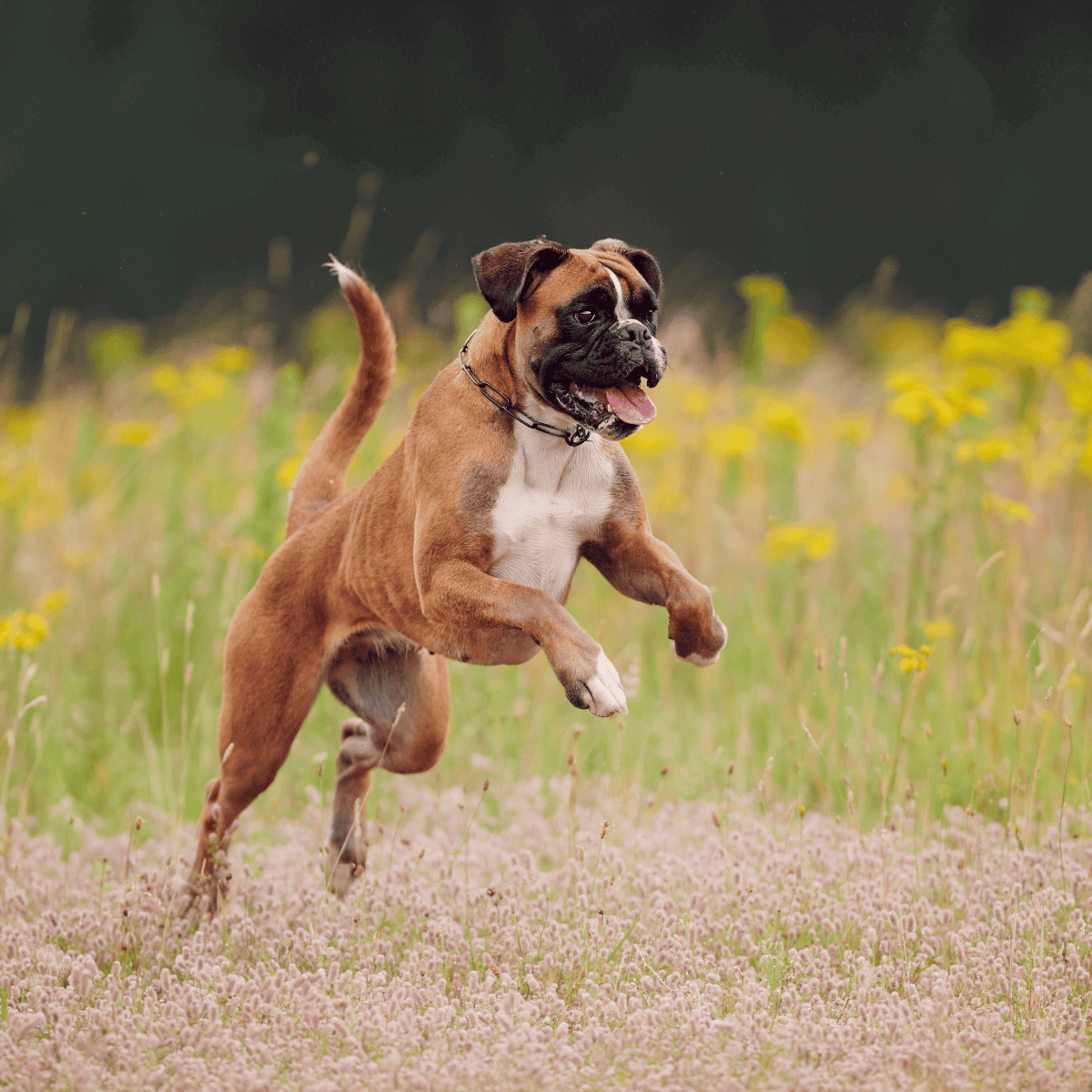
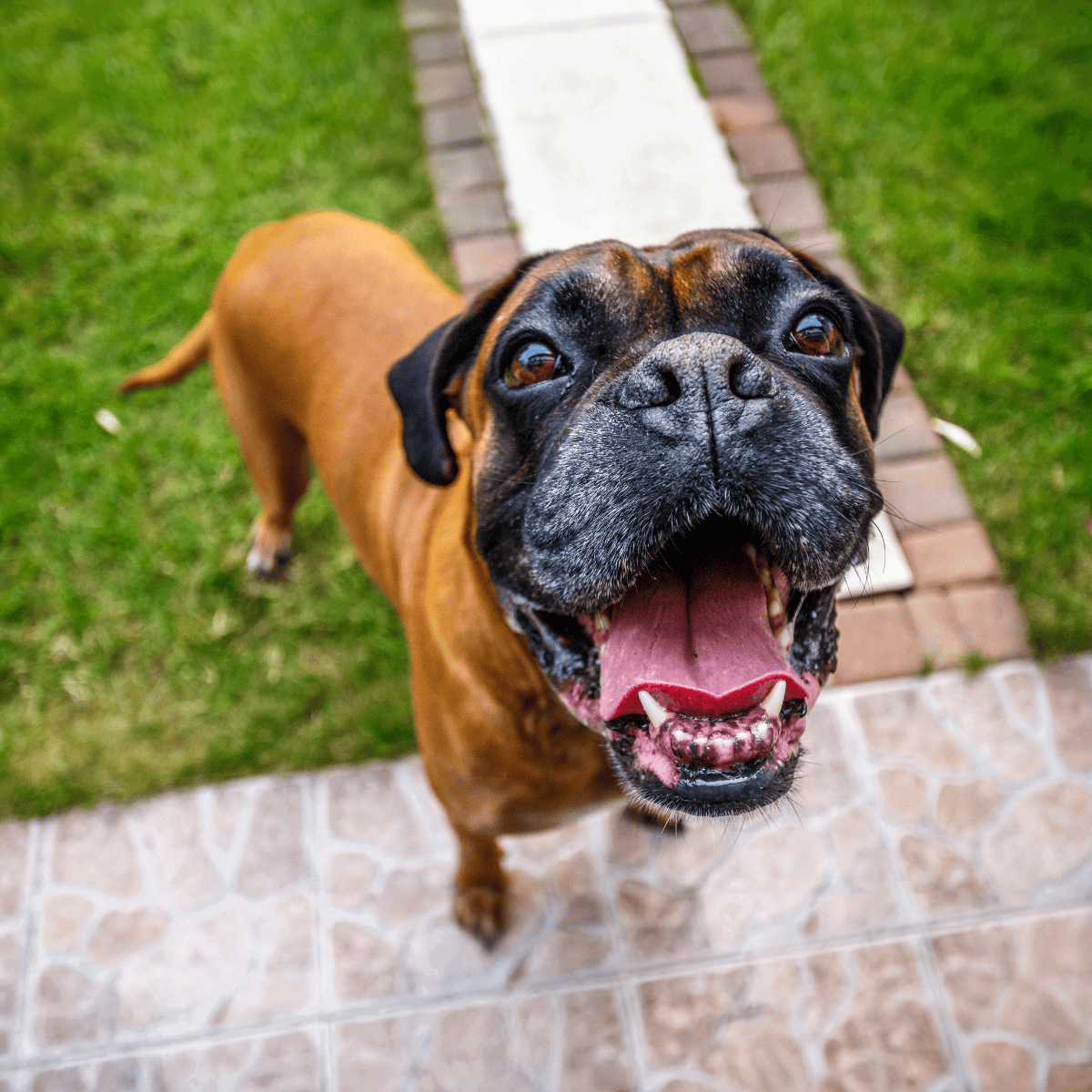
Boxer Puppies
Boxer puppies are energetic and playful, needing significant exercise and mental stimulation to stay content and well-behaved. It’s crucial to source them from reputable breeders who ensure their health and provide pedigree certification.
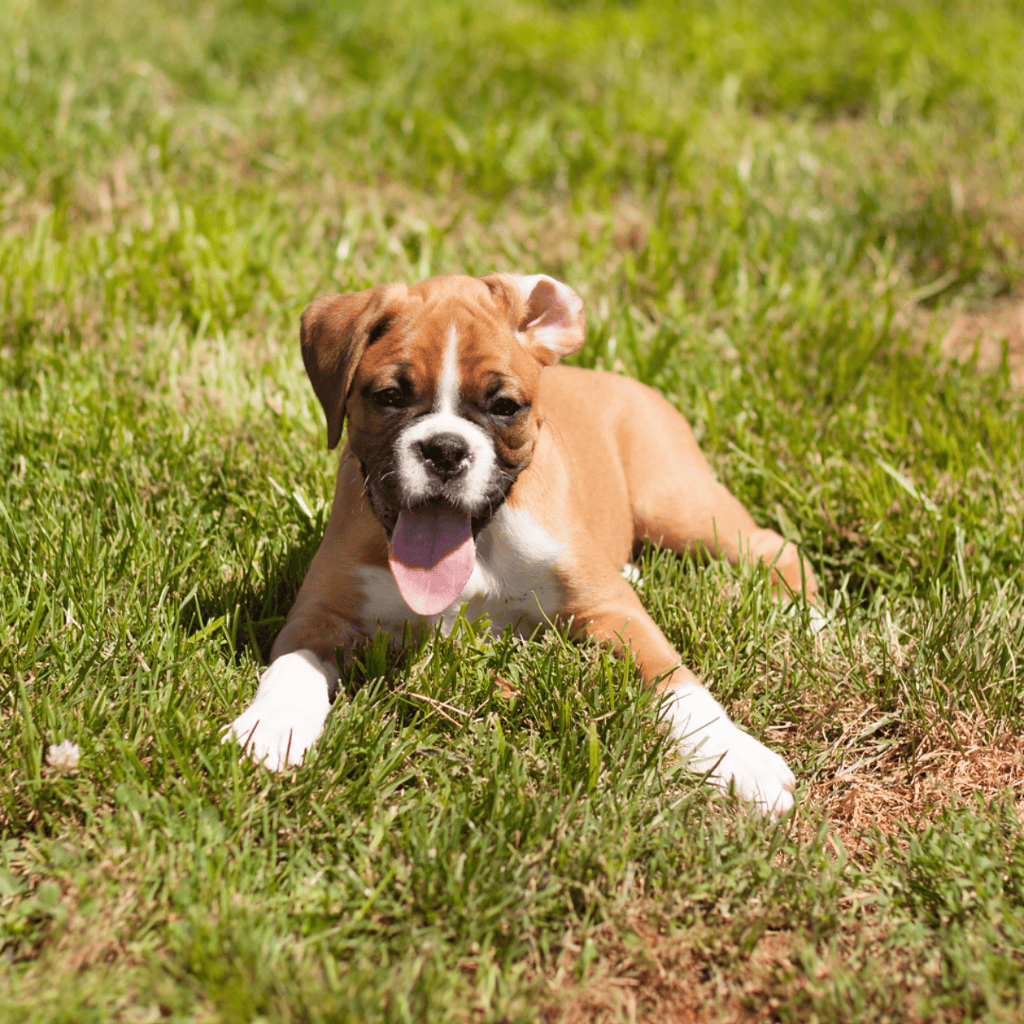
Essentials for a new Boxer puppy include licensing, vaccinations, a collar and leash, puppy supplies like food and toys, and regular veterinary care. Given their need for interaction, ensuring ample time for your Boxer is vital for their development into a well-mannered and affectionate adult dog.
Temperament & Intelligence Of The Boxer
Boxers are ideal family pets, combining energy, playfulness, and affection. They are particularly suitable for households with children. Their intelligence and learning eagerness require consistent, structured training and early socialization.
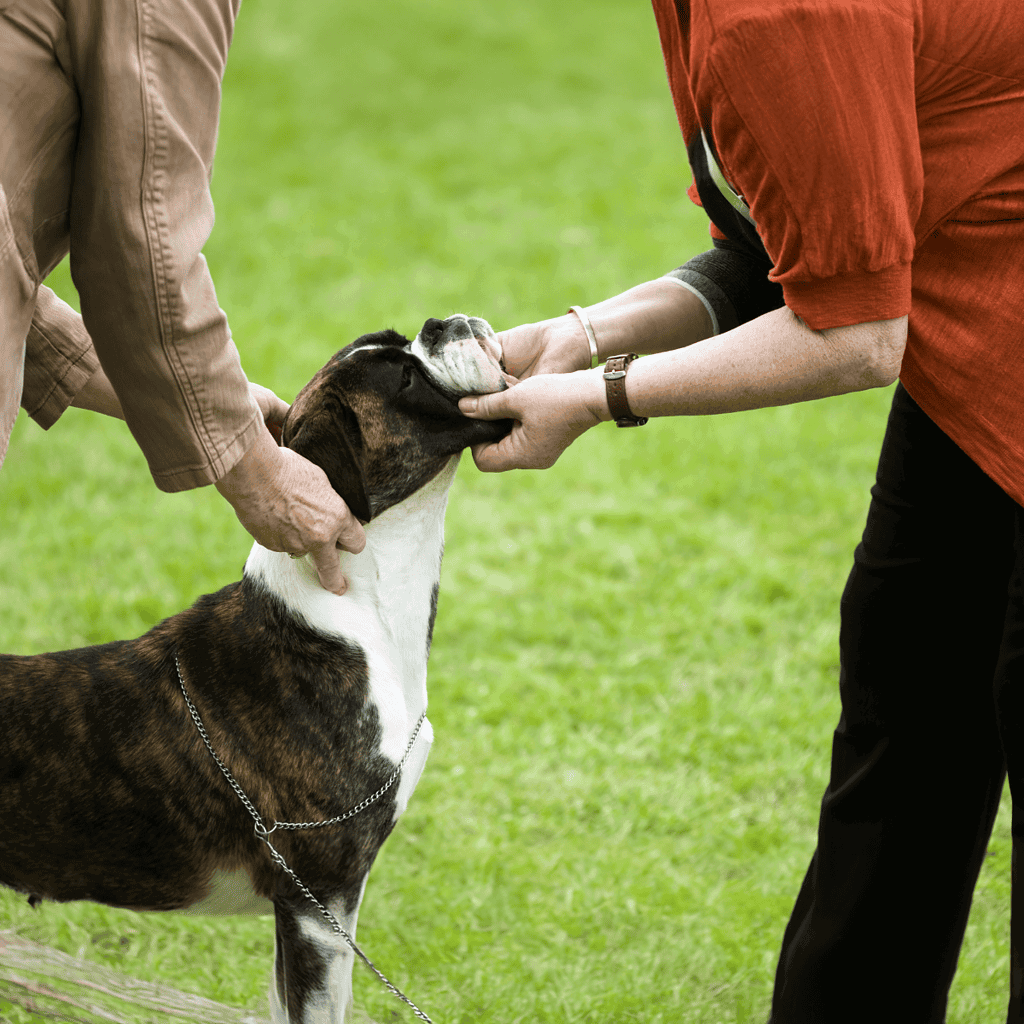
These loyal and protective dogs form deep connections with their families and crave human interaction, suffering from anxiety when alone for too long. Boxers’ alertness and keen awareness also make them excellent watchdogs.
Are These Dogs Good For Families?
Boxers are renowned for their friendliness and affection. They develop deep connections with family members and enjoy interactions with adults and children. They are gentle and playful, particularly around kids, demonstrating patience and keenness for play, making them exceptional companions for the family’s younger members.
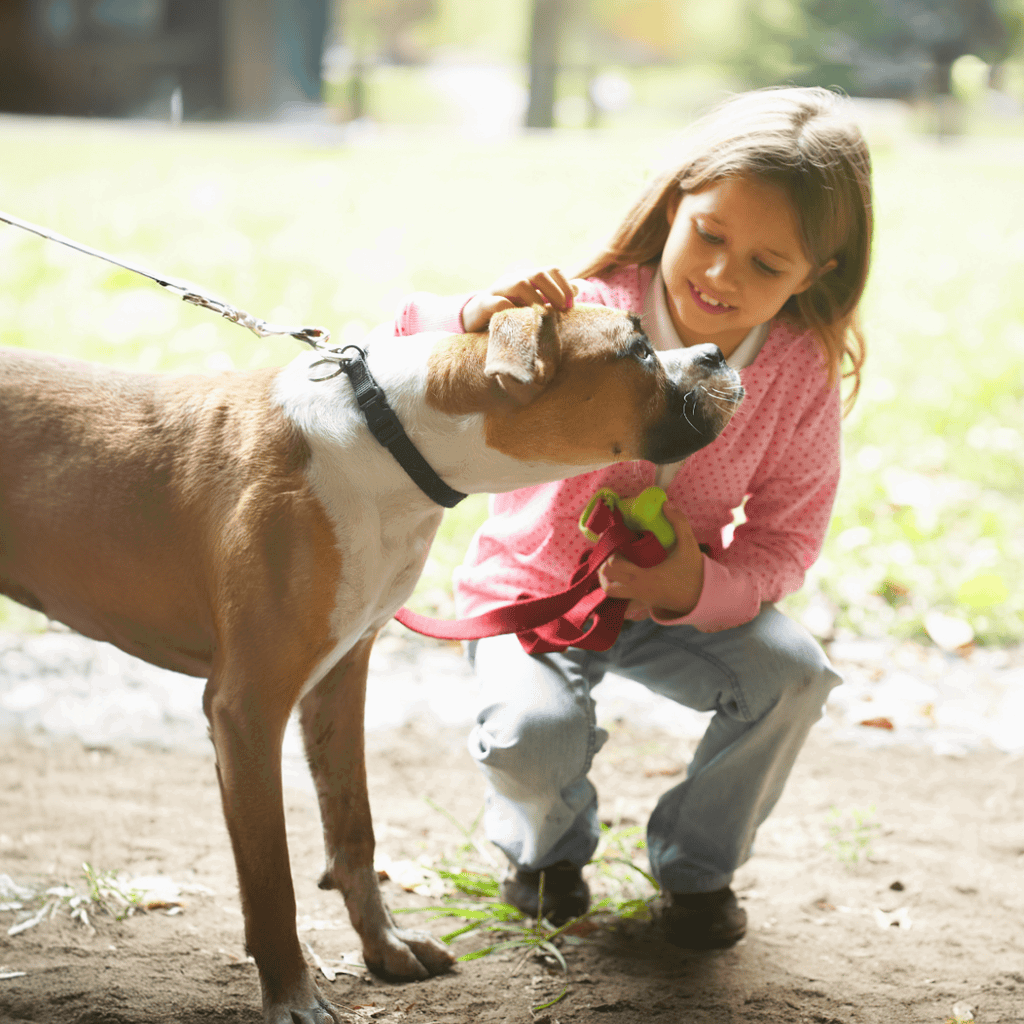
Early socialization is key, preparing them to handle diverse people and scenarios, thereby minimizing chances of shyness or aggression.
Does This Breed Get Along With Other Pets?
Boxers can be tricky when living with other pets. They are loving towards people, but they can be dominant and sometimes aggressive around other dogs. Introducing Boxers to other dogs requires careful planning. Pairing a male Boxer with a female dog or a Boxer with a non-dominant breed, such as a Beagle, can work well. Early socialization is crucial for positive interactions.
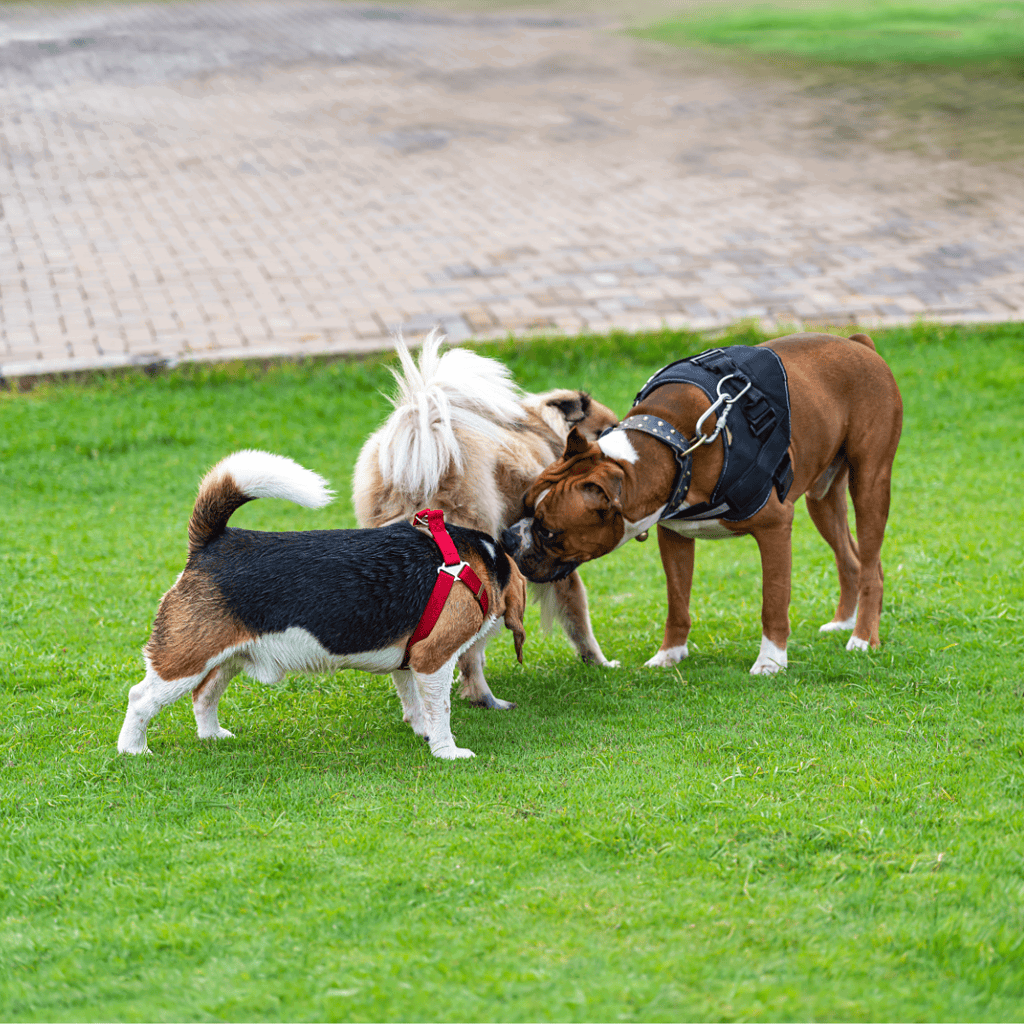
Boxers have a strong instinct to chase smaller animals, which can threaten smaller pets like cats. Training them out of this behavior is quite challenging. Families with small animals should carefully consider whether a Boxer is the right fit for their home.
Food & Diet Requirements
Boxers require a diet that suits their size and activity level. Typically, they need 2 to 5 cups of food daily, with 2 to 4 cups adequate for puppies and smaller boxers. Larger adult males may require 4 to 5 cups.

It is crucial to feed high-quality dog food that is rich in animal protein and low in carbohydrates and fillers. Consult a veterinarian for an accurate food quantity based on your boxer’s specific needs and activity levels.
Exercise
Boxers need substantial daily exercise to stay healthy, requiring at least one hour of vigorous activity daily. Brisk walks or jogging fulfill their exercise demands well. A spacious, fenced yard also provides a perfect space for them to run and play freely.
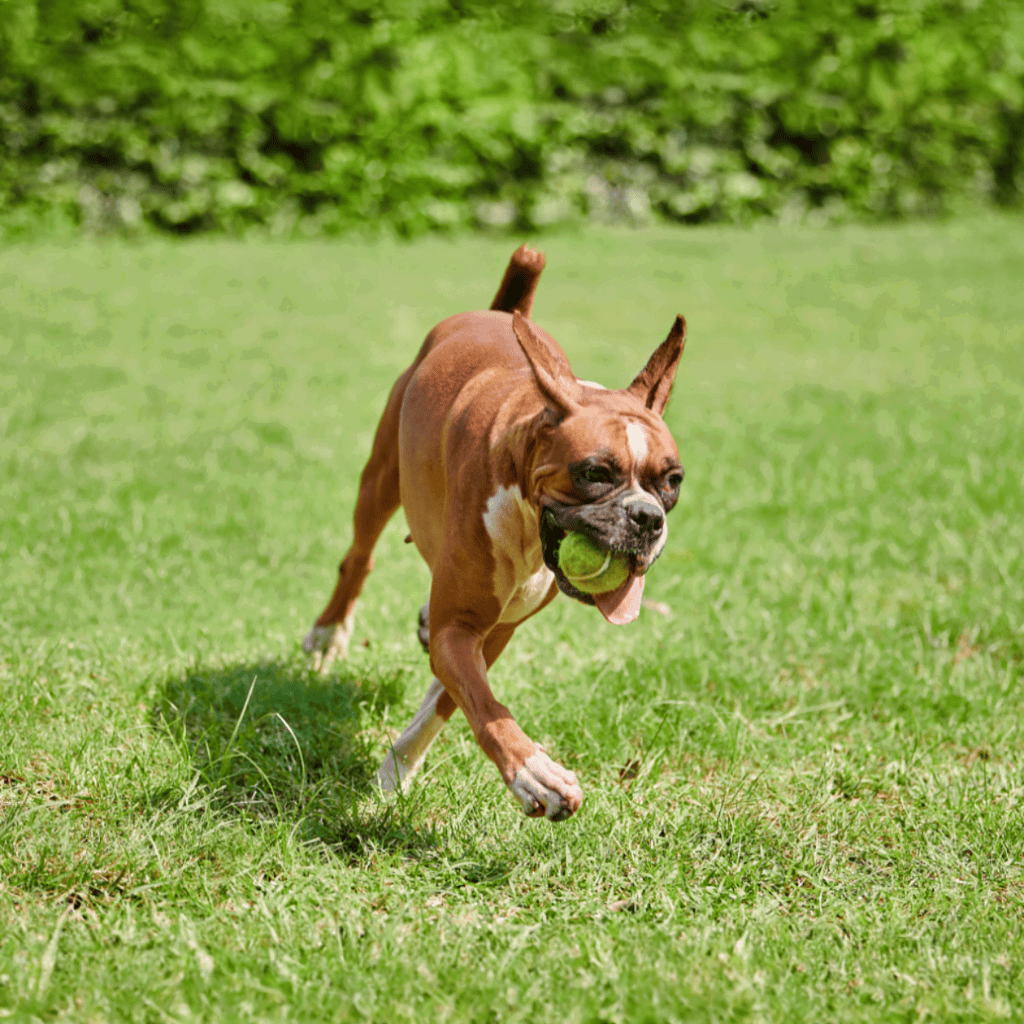
Incorporating Boxers in activities that allow them to expend their energy positively is crucial in keeping them satisfied and away from destructive behavior. Ensuring they receive enough physical stimulation is essential for their well-being, promoting a harmonious and balanced lifestyle.
Training
Boxers swiftly learn tricks and commands, but their high energy can make it challenging to keep their attention. Successful housebreaking is expected, as Boxers are inherently clean and quickly learn bathroom routines. Early training, emphasizing positive reinforcement, is crucial, as well as avoiding negative methods to prevent behavior issues.
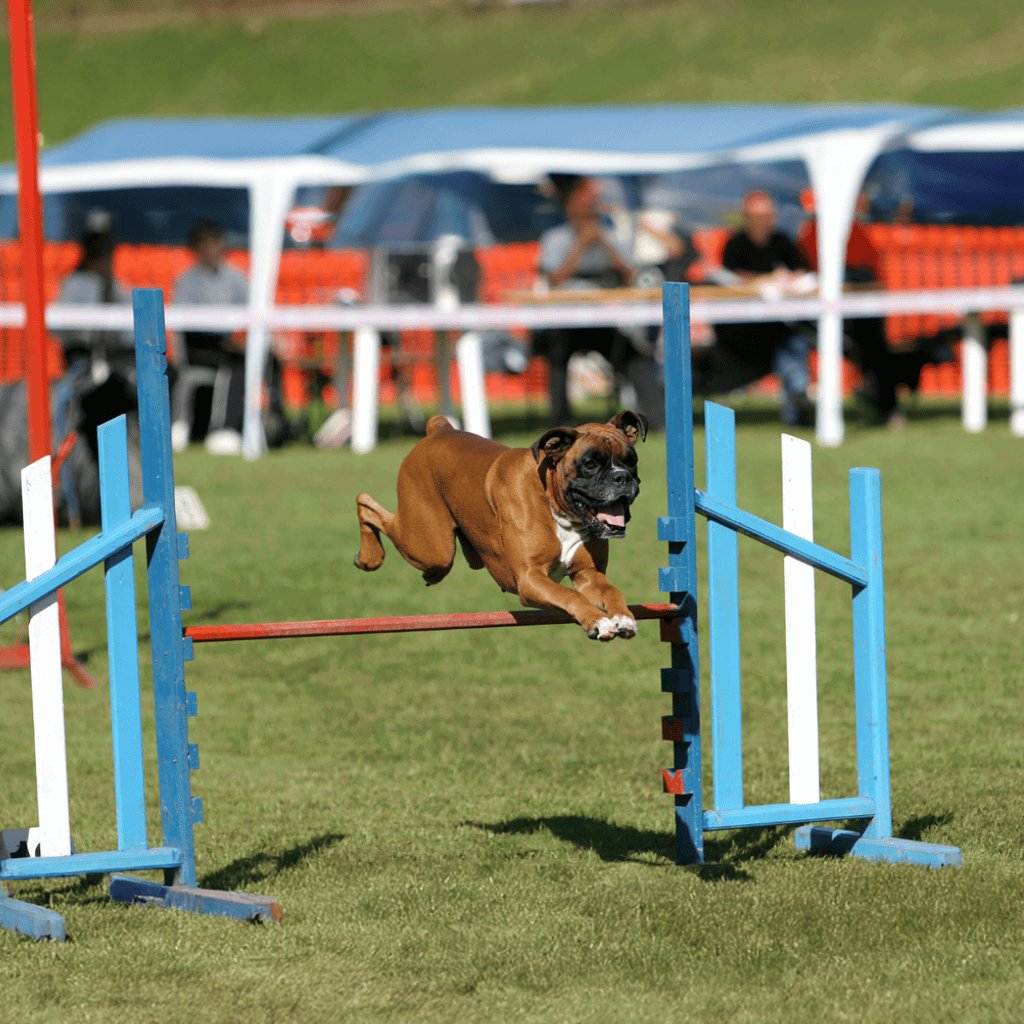
Integrating regular socialization into a Boxer’s training schedule is essential, exposing them to various settings, people, and other dogs to lessen restlessness and enhance command adherence in different environments. For optimal training results, begin with puppies, employ positive reinforcement, keep training sessions brief yet consistent, start with simple commands, and ensure frequent socialization to foster a well-rounded and obedient Boxer.
Grooming

The Boxer’s short, smooth coat requires little upkeep and occasional brushing to remove loose hairs and maintain its shine. Infrequent baths are advised; mild shampoo should be used only when the dog appears dirty or smells. For overall health, regularly trim nails, clean ears weekly with a damp cloth or specific cleaner, and brush teeth 2-3 times per week.
Male Vs. Female
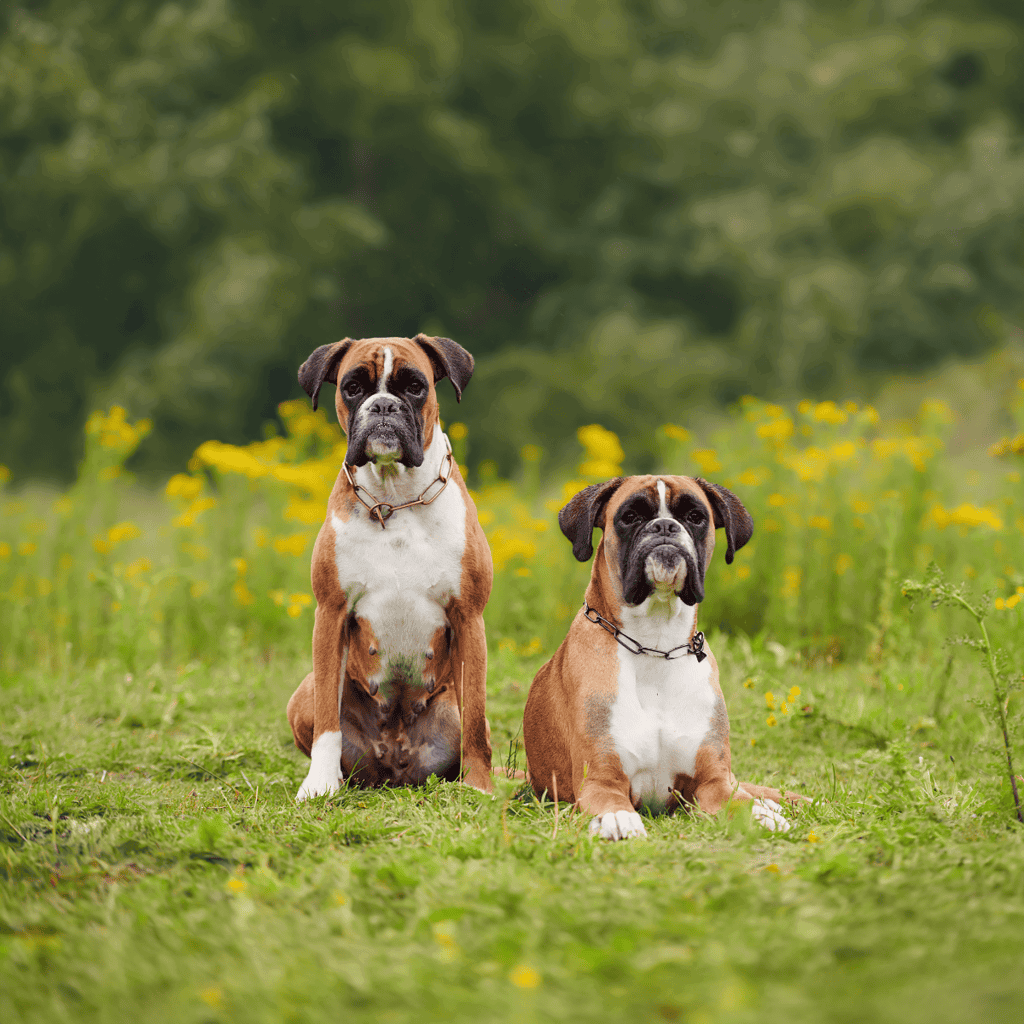
Male Boxers are larger and more imposing, while females are smaller and leaner. Males are sociable and playful, suitable for active families, while females are quieter and independent better suited for calm environments.
Fact #1: Boxers Have a Long History
Boxers are descendants of the Bulldog and Mastiff, tracing back to ancient Assyrians around 2000 BC. Known for their strength and bravery, these ancestors were pivotal in wars. Later, the Molossis dogs from present-day Albania were recognized for their courage.

The Boxer’s more direct ancestor, the Bullenbeisser, was renowned for hunting wild boar, bear, and deer across Europe and England. Flemish tapestries from the 16th century depicted these dogs. The modern Boxer was refined in Germany, deriving from the smaller Bullenbeisser of northeast Belgium.
Fact #2: Boxers Are Lovers, Not Fighters
Boxers are deeply affectionate towards their owners despite their strong lineage, thriving on human contact and family bonds. Their greatest joy is being surrounded by loved ones, and they prove themselves especially gentle and patient with children. They naturally protect kids and relish in family activities, showcasing their affinity for young ones by being excellent companions.
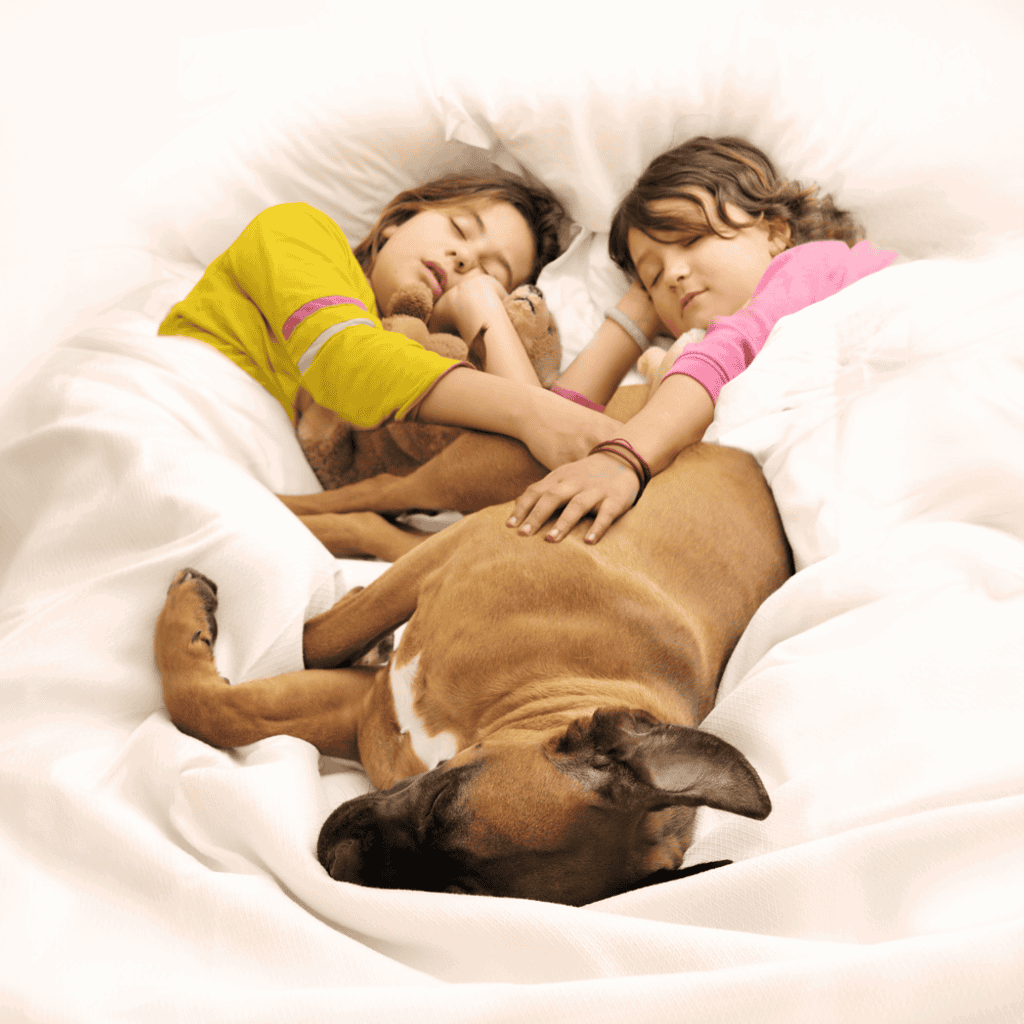
Boxers are loving and social and long for attention and companionship, making them unsuitable for long periods of solitude. Their ability to form close friendships with other pets and dislike of being alone underline their need for interaction. With their loving nature, boxers truly embody the spirit of family dogs, debunking any myths about their toughness.
Fact #3: Boxers Make Excellent Service Dogs
Boxers are distinguished by their intelligence and loyalty, qualities that make them outstanding service dogs. Thanks to their alert and dependable nature, they excel as guide dogs for the visually impaired, offering security and companionship. Additionally, their ability to sense the onset of seizures makes them excellent alert dogs for individuals with epilepsy, providing essential warning time.
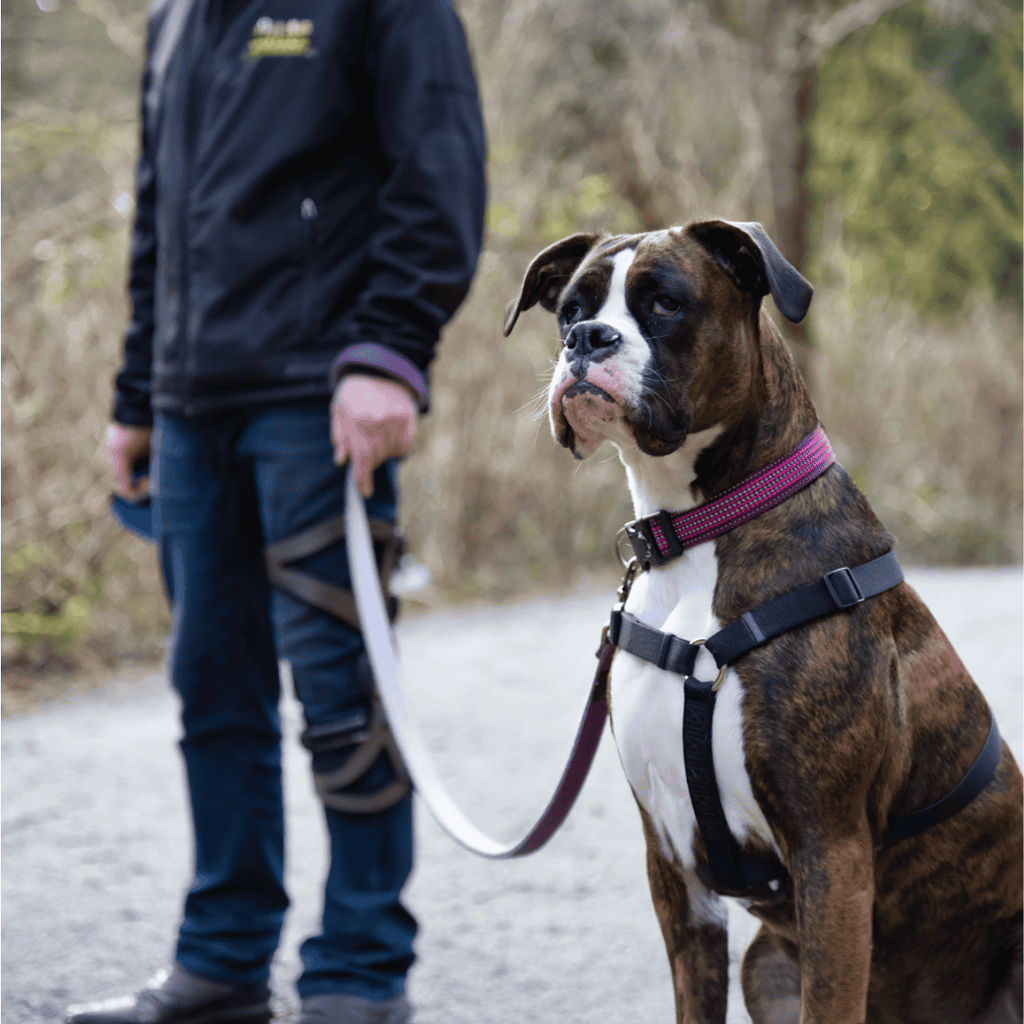
Key characteristics include quick learning and problem-solving abilities, deep loyalty to their owners, and an acute awareness of environmental changes. Effective training and consistent mental and physical stimulation are essential for Boxers to fulfill their potential as service dogs. Their adaptability and skill in performing various tasks render them invaluable companions for those in need.
Frequently Asked Questions
What is the average weight range for a Boxer?
Adult male Boxers typically weigh between 60 to 70 pounds. Female Boxers usually fall in the range of 55 to 65 pounds.
What personality traits are typically seen in Boxers?
Boxers are known for their energetic and playful nature. They are generally affectionate with their families and are good with children. They also exhibit protective instincts, making them excellent watchdogs.
How long do Boxers generally live?
The average lifespan of a Boxer is around 10 to 12 years. With proper care, some Boxers can live a bit longer.
What are the standard size dimensions of a Boxer?
Male Boxers usually stand between 23 to 25 inches tall at the shoulder. Females are slightly smaller, measuring about 21.5 to 23.5 inches in height.
What variety of colors do Boxers come in?
Boxers commonly come in fawn and brindle colors. They may also have white markings on their chest, paws, and face. Some Boxers are predominantly white, though this is less common.
How often do Boxers require grooming?
Boxers have a short, smooth coat that is relatively low-maintenance. They require brushing about once a week to keep their coat healthy and to reduce shedding. Occasional baths are also beneficial.

Didn’t find what you need? Use the search!
Search our database of over hundreds of posts with up-to-date information from our experts and veterinarians.

